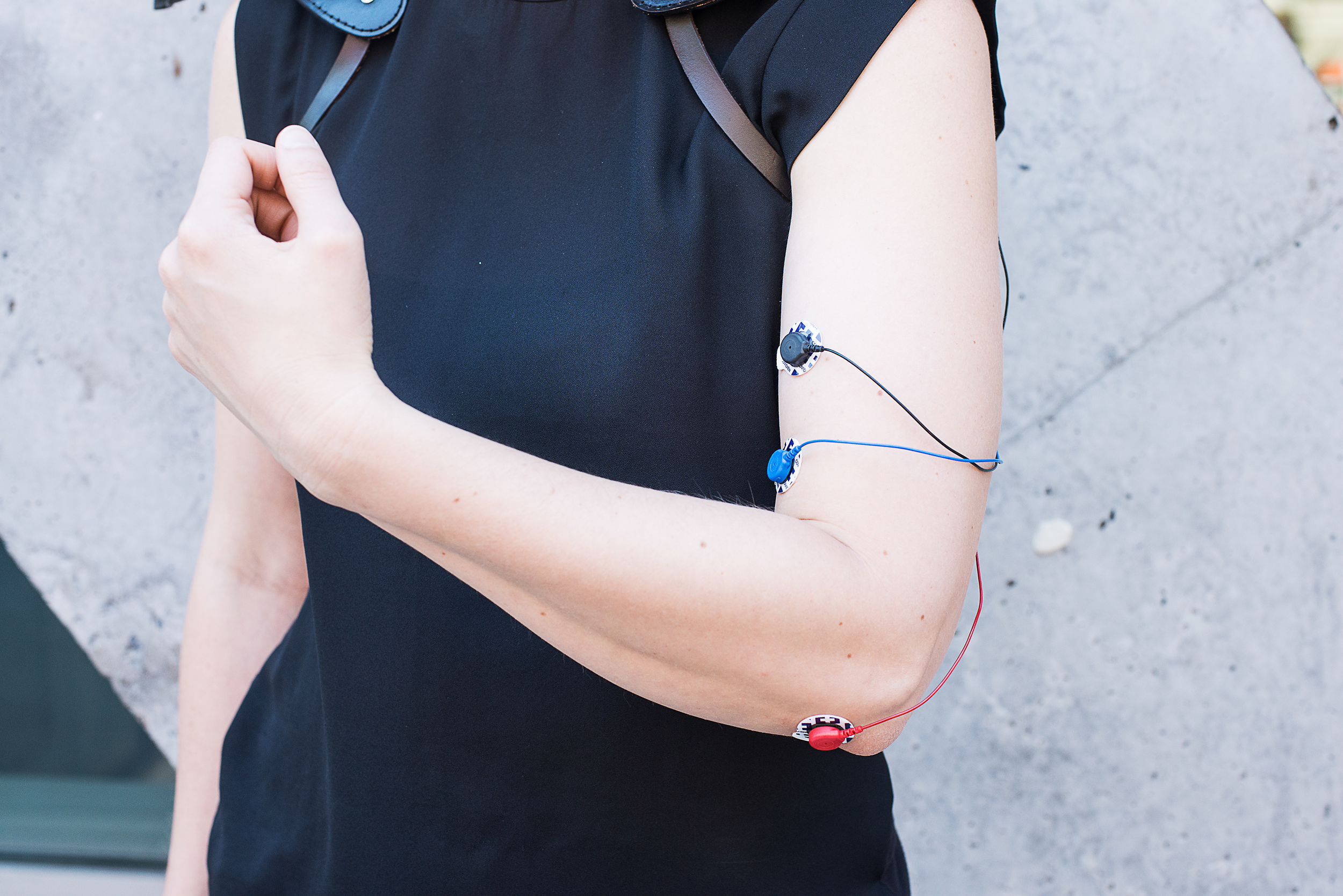Monarch v.2
Research, User-testing, Interaction Design & Fabrication
Monarch is a wearable and muscle-activated kinetic textile. It consists of textile forms attached to the shoulders that expand and contract in response to the movement of the wearer's muscles. By physically extending natural body language, Monarch explores how wearable technologies can be used as a form of personal expression, as well as how and when they can begin to feel like a visceral extension of self.
The first version of Monarch was created as part of the Prosthetic Technologies of Being project, a collaboration between the Social Body Lab at OCAD University and Jamie Sherman, funded by Intel Research. Version 2 includes revisions to the hardware, mechanics, design, and styling so that it is better able to be worn in everyday life.
For more info on our process read Monarch V2: An Iterative Design Approach to Prototyping a Wearable Electronics Project presented at DIS 2020.
Exhibitions
Wired to Wear, Museum of Science and Industry, Chicago. Opens March 2019. https://www.msichicago.org/explore/whats-here/exhibits/wired-to-wear/
Making Patterns, Eyebeam Gallery, New York. 2015. https://www.eyebeam.org/events/making-patterns/
ISEA 2015, Vancouver Art Gallery, Vancouver (link)
FASHIONOTES x WEARABLES, Fashion Week, Toronto. 2014. http://www.fashionotes.com/content/2014/10/fashionotes-x-wearables-event-re-cap/ Electric Runway, Maker Festival, Toronto. 2015. https://electricrunway.com/press-electric-runways-launch-party/
Publication History
Kate Hartman, Boris Kourtoukov, Izzie Colpitts-Campbell, and Erin Lewis. 2020. Monarch V2: An Iterative Design Approach to Prototyping a Wearable Electronics Project. In Proceedings of the 2020 ACM Designing Interactive Systems Conference (DIS ’20). Association for Computing Machinery, New York, NY, USA, 2215–2227. DOI: https://doi.org/10.1145/3357236.3395573
Hartman, Kate, et al. “Monarch: Self-Expression Through Wearable Kinetic Textiles.” Proceedings of the Ninth International Conference on Tangible, Embedded, and Embodied Interaction, ACM, 2015, pp. 413–414. ACM Digital Library, doi:10.1145/2677199.2690875.







